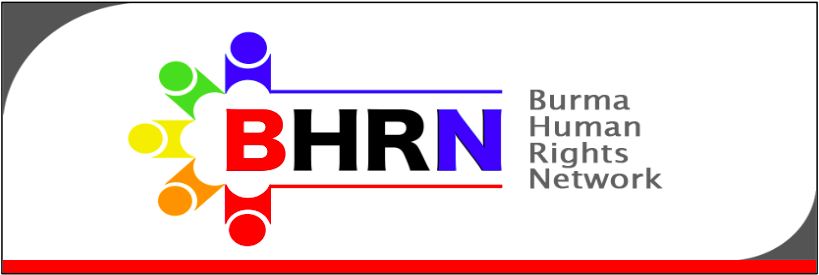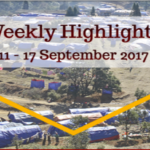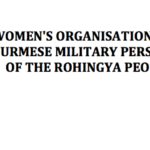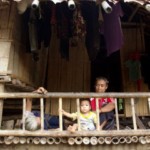Burma Human Rights Network (BHRN) | September 1, 2017
1st September 2017, London, United Kingdom – The Burma Human Rights Network is monitoring events throughout Burma and in Burmese media with significant concern as Government outlets, local media and Burmese social media are taking major roles in destabilizing an already chaotic situation in Northern Rakhine State, following attacks on 30 police posts by the insurgent group Arakan Rohingya Salvation Army (ARSA) on August 25th. Official Government Facebook pages have utilized dehumanizing language and placed restrictions on media outlets insisting they do the same while a major campaign demonizing the Rohingya population and aid workers inside of Rakhine State is underway. These elements combined have the potential to take an already deadly and chaotic situation between insurgents and security forces and turn it into one of communal conflict as well, which could drastically increase the number of injured, killed and displaced, and have already resulted in an attack on four local journalists in Maungdaw. These efforts by the Government, Military and nationalists follow a pattern previously witnessed in Myanmar during times of unrest in Rakhine State and may easily worsen the situation again if not addressed and corrected.
In news relayed by official government offices, they have placed all blames on Muslims living in Rakhine State while positioning themselves as sole source of information on the situation. Even regarding cases as minor as that of two Muslims arrested for illegally transporting cows. After these latest attacks on 30 security force outposts, the government evacuated only evacuated Rakhine people. Muslims who had nothing to do with the attacks have been left stranded and caught in the conflict with no assistance and tremendous difficulty fleeing.
As news is posted in Myanmar it is translated to English as well. Notably, the Burmese text uses the term “Extremist Terrorist Bengali” which in the English versions is simply translated as “terrorist”. The difference is an observable reinforcement of ethnic tension in the original Burmese, which is part of a broader campaign during the conflict to inflame bigotry and fear. Similarly, those killed in the attacks are described as “innocent civilians killed by brutality”. The language presents security forces as civilians while also connection the concept of barbarism to Rohingya as a whole. The underlying intention seems to be to inflame anger which will likely lead to violence.
Within a day of the attacks the Government proscribed ARSA as a terrorist group and warned the media that they were expected to use this term as well. Further, the government implied that those aiding ARSA or ARSA’s message would be held accountable. In its most dangerous interpretation the statement implies that breaking away from the Government narrative of a serious conflict, which will likely result in the deaths of countless civilians, could be considered a criminal offense. At its most benign it still implies that any journalists seeking to accurately cover the conflict, including statements released by ARSA, could be subject to punishment.
These restrictions also create a climate of fear in other parts of Burma which are already experiencing elevated religious tension. It imposes that those who are sympathetic to the Rohingya are somehow also ‘Terrorist supporters’. These legal uncertainties coupled with anti-Muslim sentiment could easily escalate into more violence or persecution of the broader Muslim population. The media, which is reporting on Rakhine State is not reporting the plight of Muslims, but focusing on the situation as one of insurgency and security alone. The Government has made no attempts to warn or prevent media from inflaming
violence further in Rakhine State through misinformation or provocative language. To some degree it seems encouraged that language and reporting are inflammatory and broadly accusatory towards Rohingya and INGOs.
This is occurring as the media reporting on Rakhine is presenting information without context or understanding of how the current situation came to be or what its root causes are. The presentation of the situation remains one of a violent invading people who are behaving violently because that is their nature, and this is widely repeated and accepted within the public and on social media where Rohingya are regarded as uneducated, dirty, violent and without respect for law and culture. The entire process is one of dehumanization.
Simultaneously, a large social media campaign has been launched to spread information, and often disinformation about the situation and to undermine perceived “Rohingya lobbyists”. Often times Facebook posts by nationalists have directed abuse towards journalists, NGO workers and Rohingya activists. Much of what these accounts spread seems intentionally designed to stir up as much hatred and outrage as possible, rather than present any grievances of the Rakhine community or security fears of the population. Among images spread many of them were taken from official Government Facebook pages, further stressing how the Government is enabling the deterioration of the communal situation. The social media campaigns have strong similarities to notable propaganda campaigns that have preceded mass atrocities elsewhere in the world and the Government should be taking immediate action to try to de- escalate tensions at the communal level.
In an incident that seems connected to rising tensions, four Burmese journalists were attacked in Maungdaw on August 29th at 2pm. The journalists were able to escape.
These events occurring at the same time as military operations in Northern Rakhine signal a strong possibility of an even worse situation to come. The Government should take immediate steps to restore calm among the civilian population, especially inside Rakhine to reduce the likeliness of communal conflict. The Government must discourage any violence between communities and take steps to avoid the dehumanization of Muslim civilians. The international community should take steps to monitor how the Government’s statements inflame the situation and attempt to uncover any coordinated campaigns intended to increase violence resulting in deaths and displacement of particular ethnic and religious groups.
Notes for Editors
Background on the current situation:
On August 25th, 2017 the Rohingya insurgent group ARSA attacked as many as 30 posts held by security forces in the Northern part of Myanmar’s Rakhine State.The Military has deployed reinforcements to the area is responding with a worrying crackdown that has already seen massive area where civilians are living razed to the ground in arson attacks. In October of 2016 ARSA (Then called al Yaqeen) attacked 3 police posts in the same area which saw a devasting response from the military over the following months that included several allegations of Crimes Against Humanity.
Background on the Burma Human Rights Network (BHRN)
Burma Human Rights Network (BHRN) works for human rights, minority rights and religious freedom in Burma. BHRN has played a crucial role advocating for human rights and religious freedom with politicians and world leaders.
Media Enquiries
Members of The Burma Human Rights Network (BHRN) are available for comment and interview.
Please contact:
Kyaw Win
Executive Director of the Burma Human Rights Network (BHRN) E:kyawwin78@gmail.com
T: +44(0) 740 345 2378
Download the PDF version of the press release here.







